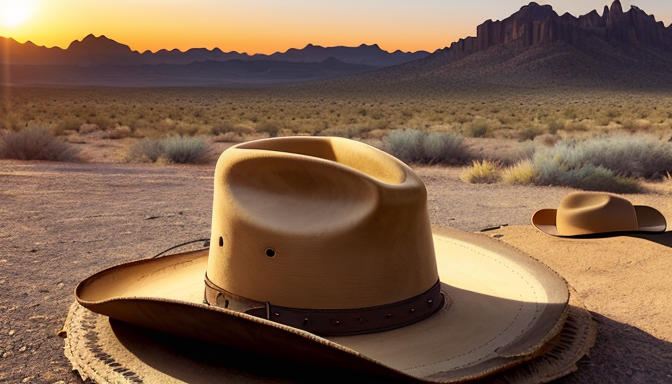When we think of the Western frontier, images of rugged cowboys, vast landscapes, and epic showdowns often come to mind. But what truly shapes our understanding of this iconic genre? It’s the literature and films that capture the spirit of adventure and the struggles of humanity. From the dusty trails of the Old West to the bustling saloons, these narratives have woven themselves into the fabric of American storytelling.
Consider classic works like “The Virginian” by Owen Wister, which not only introduced the archetypal cowboy but also set the tone for countless stories that followed. This book is more than just a tale of the West; it’s a reflection of values such as honor, loyalty, and the quest for identity. Similarly, “Lonesome Dove” by Larry McMurtry paints a vivid picture of friendship and the harsh realities of frontier life, reminding us that the West was as much about human connections as it was about adventure.
As we dive deeper into the world of Western literature, we find that these stories do more than entertain; they challenge us to reflect on our own values and beliefs. They ask us questions: What does it mean to be brave? How do we define freedom? In a way, these tales are like mirrors, reflecting not just the past but also our present and future aspirations. So, buckle up and get ready to explore the epic tales that have left an indelible mark on our culture!
The Pioneers of Western Literature
When we think of the Western frontier, images of rugged landscapes, daring cowboys, and fierce Native American warriors often come to mind. But what truly shaped this iconic narrative? It’s the pioneers of Western literature who laid the groundwork for these tales, crafting stories that resonate through generations. Authors like Mark Twain, with his vivid depictions of life along the Mississippi, and Willa Cather, who captured the essence of the Great Plains, transformed the literary landscape.
These writers were not just storytellers; they were cultural architects. Their works reflected the struggles and triumphs of a nation in the throes of expansion. For instance, Twain’s The Adventures of Huckleberry Finn offered a critical lens on race and identity, while Cather’s My Ántonia celebrated the immigrant experience. Each book served as a mirror, reflecting societal values and conflicts of their time.
Moreover, the influence of these literary giants extends beyond the page. Their stories have been adapted into films that continue to shape our understanding of the American West. Think about the classic films that brought these narratives to life, where the vast landscapes become characters in their own right, echoing the struggles and dreams of those who dared to venture into the unknown.
In essence, the pioneers of Western literature didn’t just tell stories; they crafted the very myths that define American culture. Their legacies remind us that every tale of the West is a thread in the rich tapestry of our shared history.

Modern Interpretations and Adaptations
When we think of the Western frontier, images of dusty trails and heroic cowboys often come to mind. But what happens when contemporary artists take these classic tales and give them a fresh twist? It’s like watching a beloved old movie get a stunning remake—you know the story, but the way it’s told can surprise you! Modern interpretations of Western literature and film breathe new life into these age-old narratives, making them relevant to today’s audiences.
Take, for example, the recent adaptations of classic novels like “True Grit” and “The Magnificent Seven”. These stories, originally penned decades ago, have been reimagined to reflect current societal issues, such as justice, morality, and the complexities of human relationships. Today’s filmmakers and authors don’t just retell the stories; they dive deep into the characters’ motivations, making them more relatable. It’s a bit like finding a hidden layer in a well-loved song—you suddenly hear the lyrics in a whole new light!
Moreover, the rise of diverse voices in Western storytelling has opened the door to a broader range of experiences. Authors and filmmakers from various backgrounds are now contributing their unique perspectives, which adds richness and depth to the genre. This shift is not just about representation; it’s about reshaping the narrative to include stories that were previously overlooked. Consider how the portrayal of Native American characters has evolved, transforming them from mere side characters into complex protagonists with their own stories to tell.
In conclusion, the modern adaptations of Western literature serve as a bridge between the past and the present, allowing us to explore the frontier through new lenses. As we continue to engage with these stories, we find that they not only entertain us but also challenge us to think critically about our own values and beliefs. So, grab your popcorn and settle in—there’s a whole new world of Western tales waiting to be discovered!
Frequently Asked Questions
- What defines Western literature?
Western literature is characterized by its exploration of themes such as adventure, morality, and the human condition, often set against the backdrop of the American frontier. It’s a reflection of societal values and the struggle between civilization and the untamed wilderness.
- Who are some key authors in Western literature?
Some of the most influential authors include Mark Twain, Zane Grey, and Larry McMurtry. Their works have not only entertained but also shaped cultural narratives, offering insights into the American spirit and identity.
- How have modern adaptations changed the perception of classic Western tales?
Modern adaptations often infuse contemporary issues like race, gender, and morality into classic narratives, making them more relatable to today’s audiences. This evolution keeps the stories alive and relevant, showing that the themes of the past still resonate.
- Why are these stories important to our culture?
These tales serve as a mirror to our history, reflecting the values and struggles of previous generations. They help us understand our roots and the evolution of societal norms, making them crucial for cultural continuity.